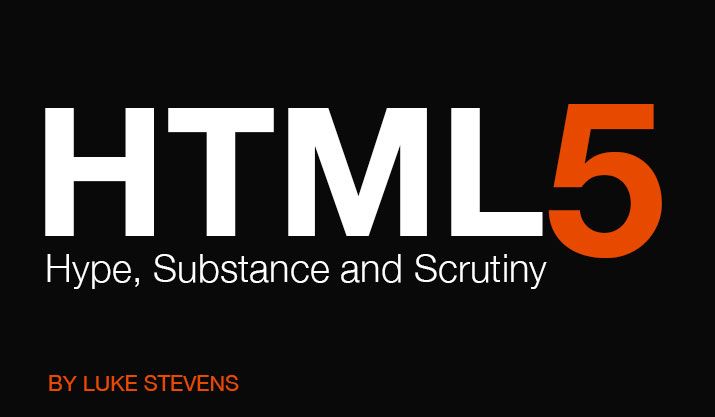Enhance Your Web Development: Learn HTML5 Essentials Today
 Siddhi Mahajan
Siddhi Mahajan
🌐 HTML5: The Future of Web Development
Welcome to the world of HTML5! 🎉 It’s the backbone of modern web development, enabling us to create interactive, efficient, and beautiful websites. Whether you're a beginner or a seasoned developer, understanding HTML5 is crucial for building dynamic web pages.
Let’s break down HTML5, its major features, and the most commonly used tags in a simple and fun way. 🚀
🧐 What is HTML5?
HTML5 is the latest version of the Hypertext Markup Language (HTML). It improves upon the previous versions by adding new elements, attributes, and behaviors that help structure and present web content more efficiently.
Key Features of HTML5:
📱 Mobile-friendly: Responsive design elements to support mobile and tablet views.
🎥 Multimedia Support: Built-in support for audio, video, and graphics.
⚡ Faster Loading: Optimized to load content quicker without needing external plugins (like Flash).
🎨 Graphics & Animation: Canvas, SVG, and other APIs make it easier to create visuals and animations.
👩💻 Better Semantics: New tags help define content more clearly for both developers and search engines.
🏗️ HTML5 Elements and Tags
HTML5 introduced a variety of new tags to make your web pages more semantic and functional. Let’s dive into the most commonly used ones! 🌊
1. <header> – The Introduction 🎤
Used to define the header section of a document or a section of content.
Typically contains the site title, logo, or navigation.
<header> <h1>Welcome to My Website</h1> <nav> <a href="#home">Home</a> <a href="#about">About</a> <a href="#contact">Contact</a> </nav> </header>
2. <nav> – Navigation 🚶♂️
Contains links for navigation within a website.
<nav> <ul> <li><a href="#section1">Section 1</a></li> <li><a href="#section2">Section 2</a></li> </ul> </nav>
3. <section> – Sections of Content 📄
Divides content into thematic groups.
<section> <h2>About Us</h2> <p>We are passionate developers building web experiences.</p> </section>
4. <article> – Standalone Content 📝
Represents independent, self-contained content, like a blog post or news article.
<article> <h2>5 Tips for Learning Web Development</h2> <p>Learning web development is exciting. Here’s how to start...</p> </article>
5. <aside> – Side Content 📰
Used for content related to the main article, like sidebars, ads, or related links.
<aside> <h3>Related Posts</h3> <ul> <li><a href="#post1">How to Learn CSS</a></li> <li><a href="#post2">JavaScript Basics</a></li> </ul> </aside>
6. <footer> – Wrapping It Up 🎁
Defines the footer of the page, often containing copyright info, social media links, etc.
<footer> <p>© 2024 My Website. All Rights Reserved.</p> </footer>
7. <audio> and <video> – Multimedia Magic 🎵🎬
Directly embed audio and video content without external plugins.
<audio controls> <source src="audiofile.mp3" type="audio/mpeg"> Your browser does not support the audio element. </audio> <video width="320" height="240" controls> <source src="videofile.mp4" type="video/mp4"> Your browser does not support the video tag. </video>
8. <figure> and <figcaption> – Better Image Handling 🖼️
Display images with proper captions.
<figure> <img src="image.jpg" alt="A beautiful scenery"> <figcaption>A beautiful scenery</figcaption> </figure>
9. <canvas> – Drawing on the Web 🎨
Create dynamic, scriptable rendering of 2D shapes and bitmap images.
<canvas id="myCanvas" width="200" height="100"></canvas> <script> var canvas = document.getElementById('myCanvas'); var ctx = canvas.getContext('2d'); ctx.fillStyle = 'blue'; ctx.fillRect(10, 10, 150, 75); </script>
10. <main> – The Heart of Your Page ❤️
Represents the main content of the
<body>. Only one<main>element should exist per page.<main> <h1>Main Content of the Page</h1> <p>This is where the most important information goes.</p> </main>
11. <time> – Representing Dates and Times ⏰
Useful for marking up dates and times in a machine-readable format.
<p>Published on <time datetime="2024-10-14">October 14, 2024</time></p>
🌟 Why Use HTML5?
🌍 Cross-browser Compatibility: HTML5 works consistently across different browsers.
🛠️ Developer-Friendly: Clean, semantic code makes it easier to read and maintain.
💻 Rich Media Support: No more relying on external plugins like Flash for videos or audio.
📈 SEO Benefits: Search engines can better understand and rank pages thanks to semantic tags.
🤔 Conclusion
HTML5 revolutionized web development with its simplicity, flexibility, and multimedia support. Whether you're building a personal blog, an e-commerce platform, or an interactive web app, HTML5 will be your foundation. So, get coding and bring your web creations to life! 🎨👩💻
Subscribe to my newsletter
Read articles from Siddhi Mahajan directly inside your inbox. Subscribe to the newsletter, and don't miss out.
Written by
